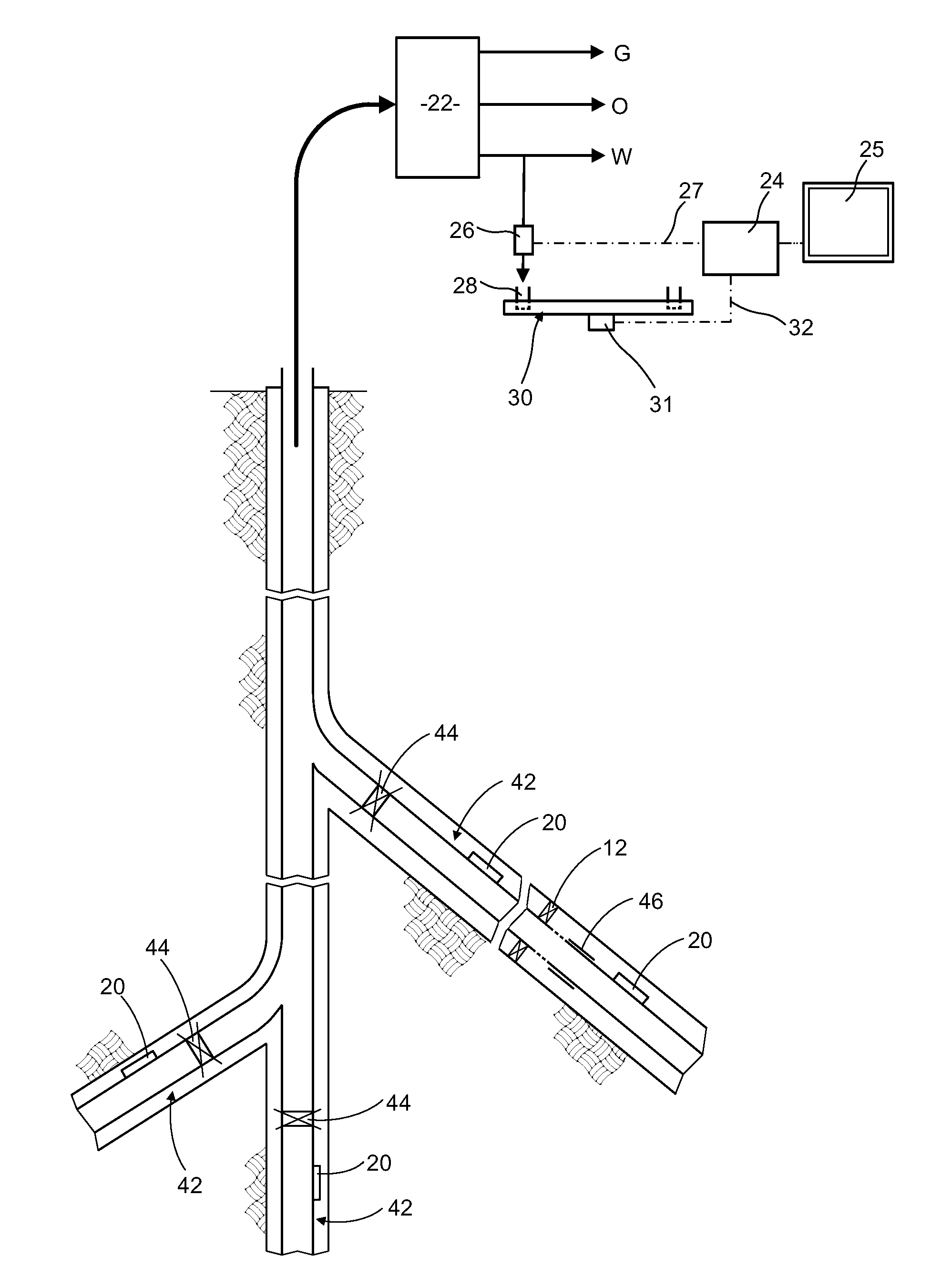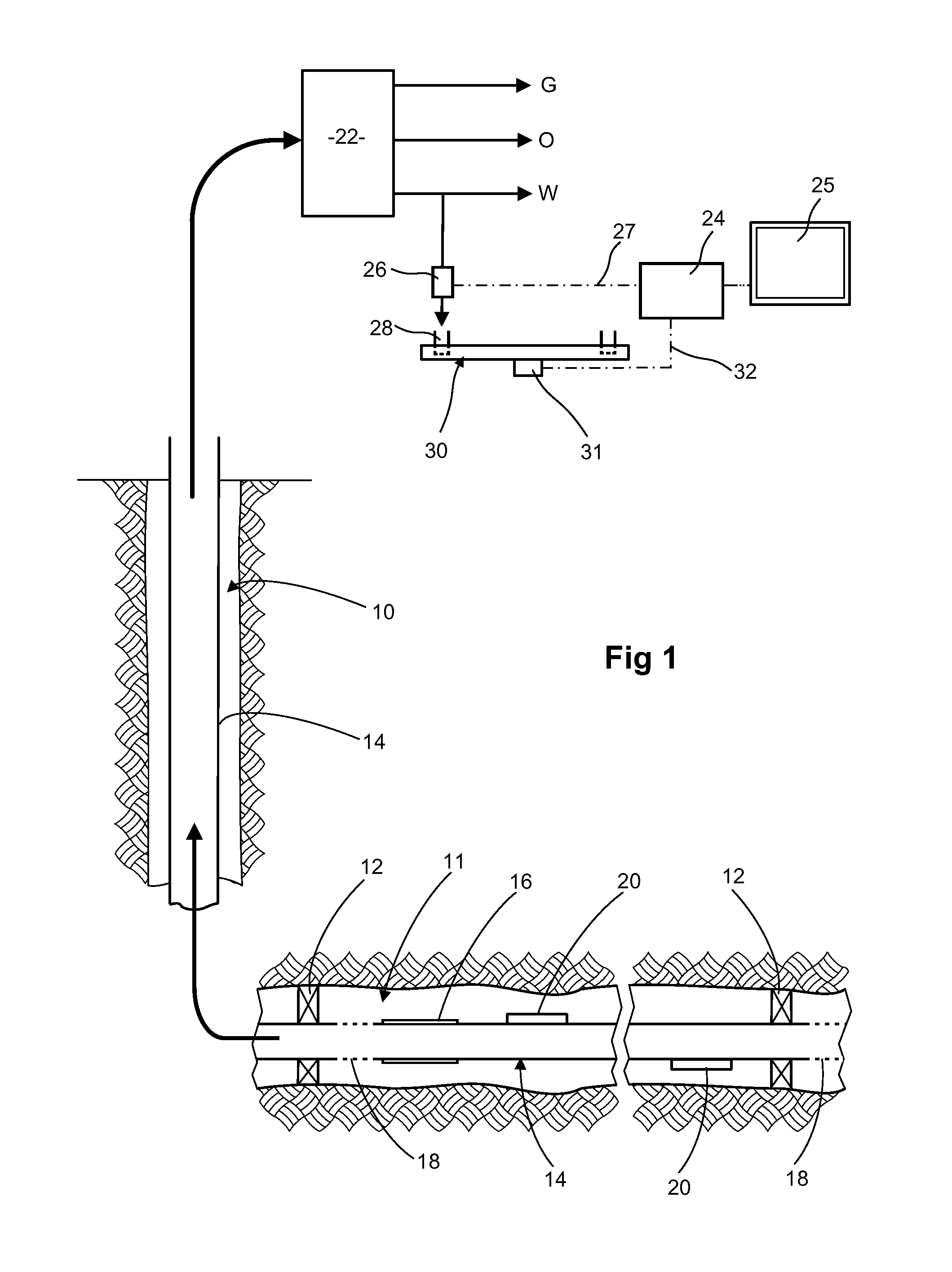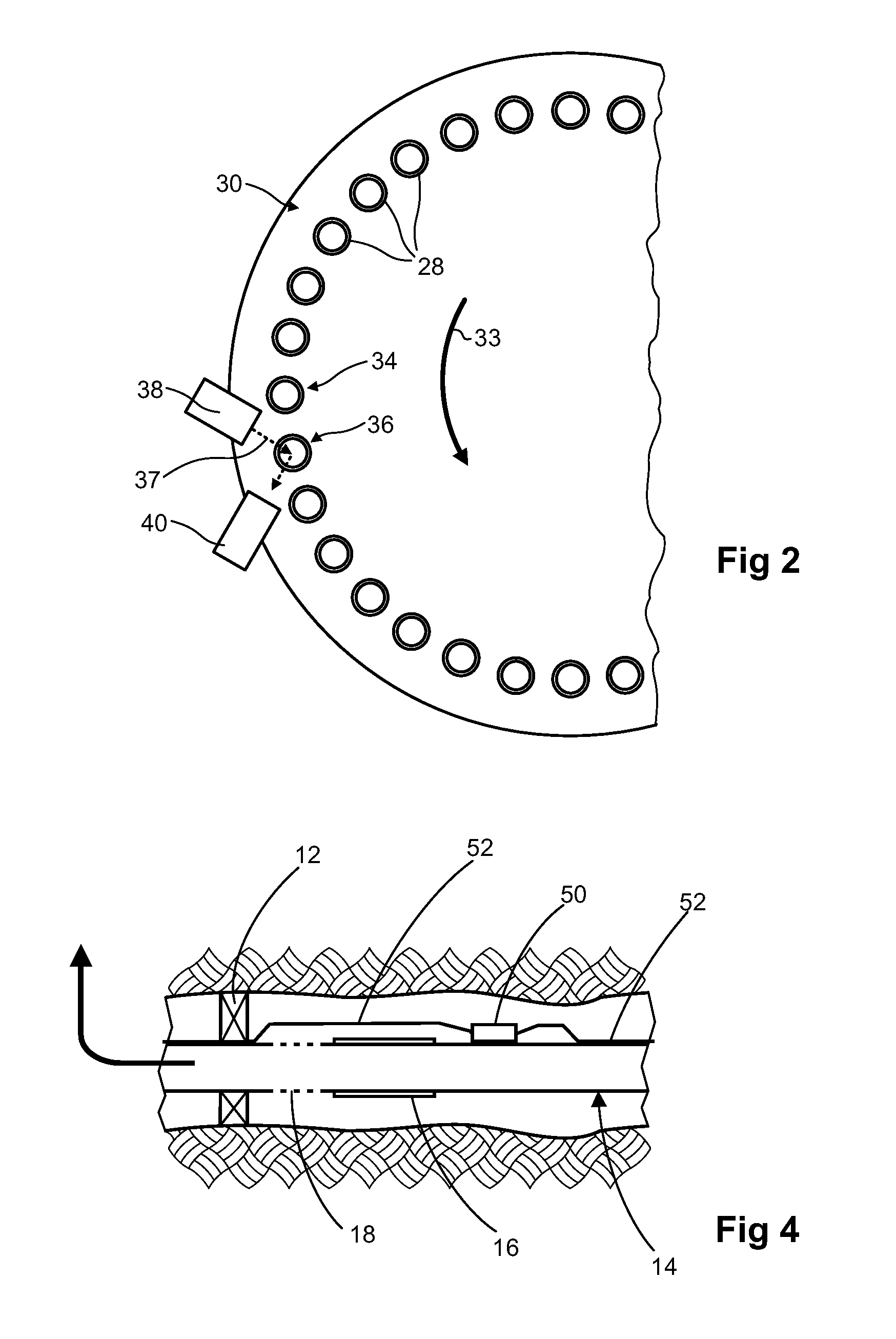Utilization of tracers in hydrocarbon wells
a technology of hydrocarbon wells and tracers, which is applied in the field of hydrocarbon production, can solve the problems of unwelcome use of radioisotopes as tracers, and the likelihood of significant time delay between taking samples, so as to reduce the possibility of human error in collecting and the effect of rapid availability of results
- Summary
- Abstract
- Description
- Claims
- Application Information
AI Technical Summary
Benefits of technology
Problems solved by technology
Method used
Image
Examples
Embodiment Construction
[0062]FIG. 1 diagrammatically illustrates a well 10 with a long lateral 11 which is subdivided into sections by packers 12 around the production tube 14. One section between two packers 12 is shown in the lower part of FIG. 1. Within each section there is a valve arrangement which controls entry to the production tube 14. Such a valve arrangement can be of conventional construction. As an example the arrangement shown in FIG. 1 comprises a sliding sleeve 16 which can be moved in response to a command transmitted from the surface so as to cover and close openings 18 for entry of fluid into the production tube 14.
[0063]Blocks of material 20 are secured to the exterior of the production tube 14 at each end of this section of the lateral. This material 20 encloses a tracer. Both blocks in this section contain the same tracer, but a different tracer is used in each section. The material of the blocks is such that the tracer is not released if the material 20 is exposed to oil but is rele...
PUM
 Login to View More
Login to View More Abstract
Description
Claims
Application Information
 Login to View More
Login to View More - R&D
- Intellectual Property
- Life Sciences
- Materials
- Tech Scout
- Unparalleled Data Quality
- Higher Quality Content
- 60% Fewer Hallucinations
Browse by: Latest US Patents, China's latest patents, Technical Efficacy Thesaurus, Application Domain, Technology Topic, Popular Technical Reports.
© 2025 PatSnap. All rights reserved.Legal|Privacy policy|Modern Slavery Act Transparency Statement|Sitemap|About US| Contact US: help@patsnap.com



